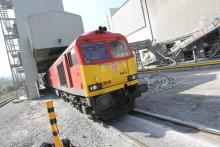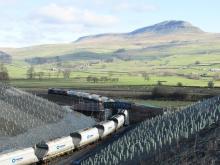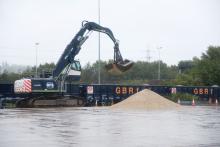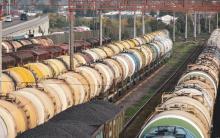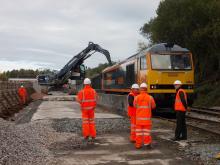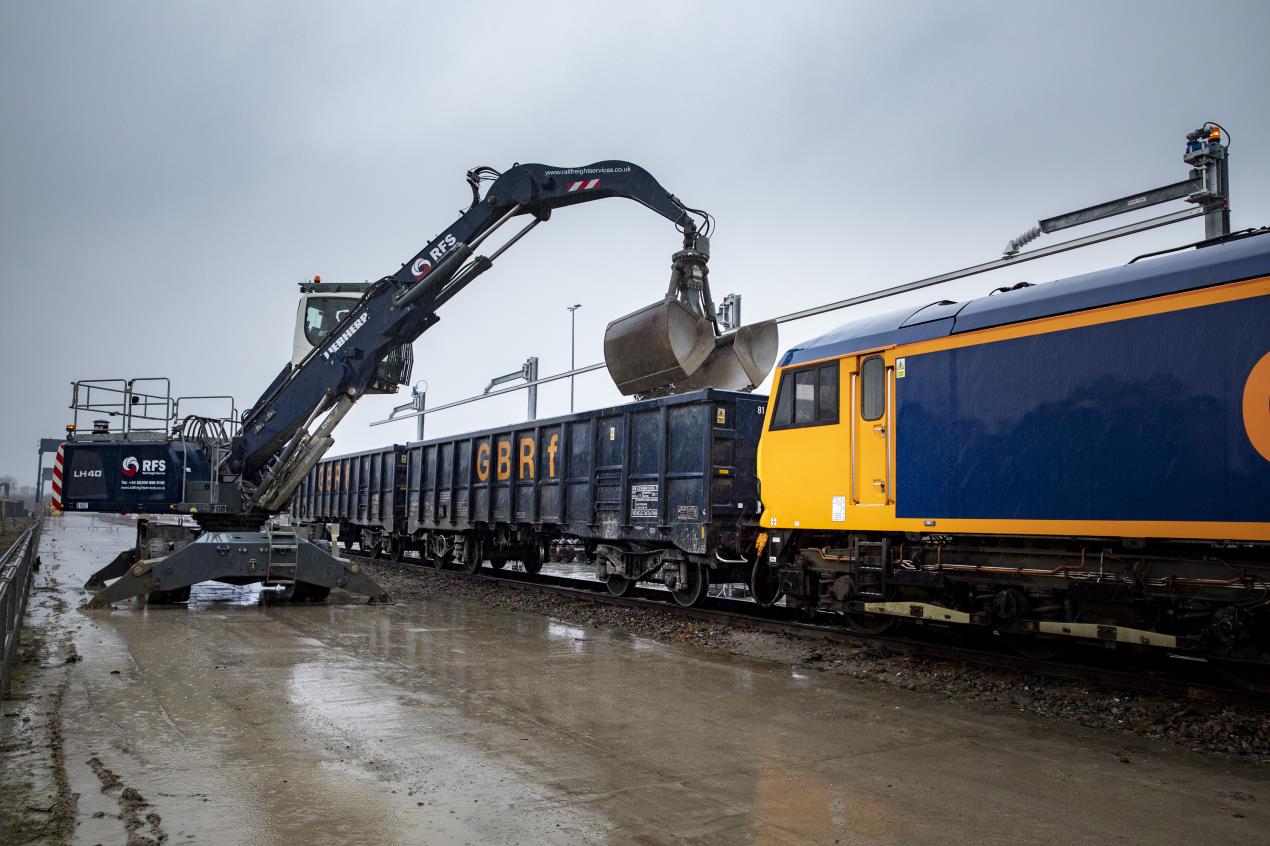
The Decarbonisation & Electrification of Freight Terminals (DEFT) project has started trialling at the Wellingborough freight terminal in Northamptonshire, UK.
Funded by the Department for Transport and Innovate UK, Furrer+Frey’s innovative system is being trialled at Tarmac’s aggregate facility in Wellingborough, in partnership with GB Railfreight.
Freight trains are typically loaded and unloaded from above, preventing the use of the high voltage overhead cables used on mainline railways. Tarmac says that, as such, they still rely on diesel to move in and out of terminals and passengers can be delayed by slower diesel freight trains on mainlines, or those waiting to be moved into a depot by a shunter.
Engineers from Furrer+Frey GB designed a moveable overhead conductor system where overhead equipment supplying electricity to the locomotives can safely move away once the train is in place and return when the train needs to move again.
The facility is adjacent to the Midland Mainline, which is currently being electrified and upgraded by Network Rail as part of the Government’s Integrated Rail Plan, to increase capacity for passengers and freight trains.
If successful, Tarmac says the moveable overhead system could go on to be deployed at other freight terminals across the UK and support the full decarbonisation of Britain’s railways.
Chris Swan, head of rail at Tarmac, said: “Decarbonising transport has been highlighted as one of the key areas in which we can help achieve net zero across the construction industry.
“Supporting this exciting project is just the latest step in the ongoing development of our rail freight capabilities, which forms part of Tarmac’s wider commitment to reducing CO2 across the whole business.
“We’re always keen to explore new initiatives and innovations that can help us move materials to the right place at the right time more efficiently and sustainably.”
Noel Dolphin, head of UK projects at Furrer+Frey GB, said: “The electrification of freight terminals is the biggest technological hurdle to net zero rail freight and we have just overcome it. The demonstrator shows how we can plug freight yards into electrified rail lines and operate them safely and efficiently with the locomotives we already have – meaning greener, cleaner and better journeys.
“This moveable conductor system means trains pull in on electricity, disconnect from it to safely load and unload, then reconnect to travel on.”
The DEFT project is one of 30 initiatives to win a share of £9m from the Department for Transport, in partnership with Innovate UK, focusing on improving journeys and reducing the environmental impacts of rail as the country builds back better from Covid-19.


